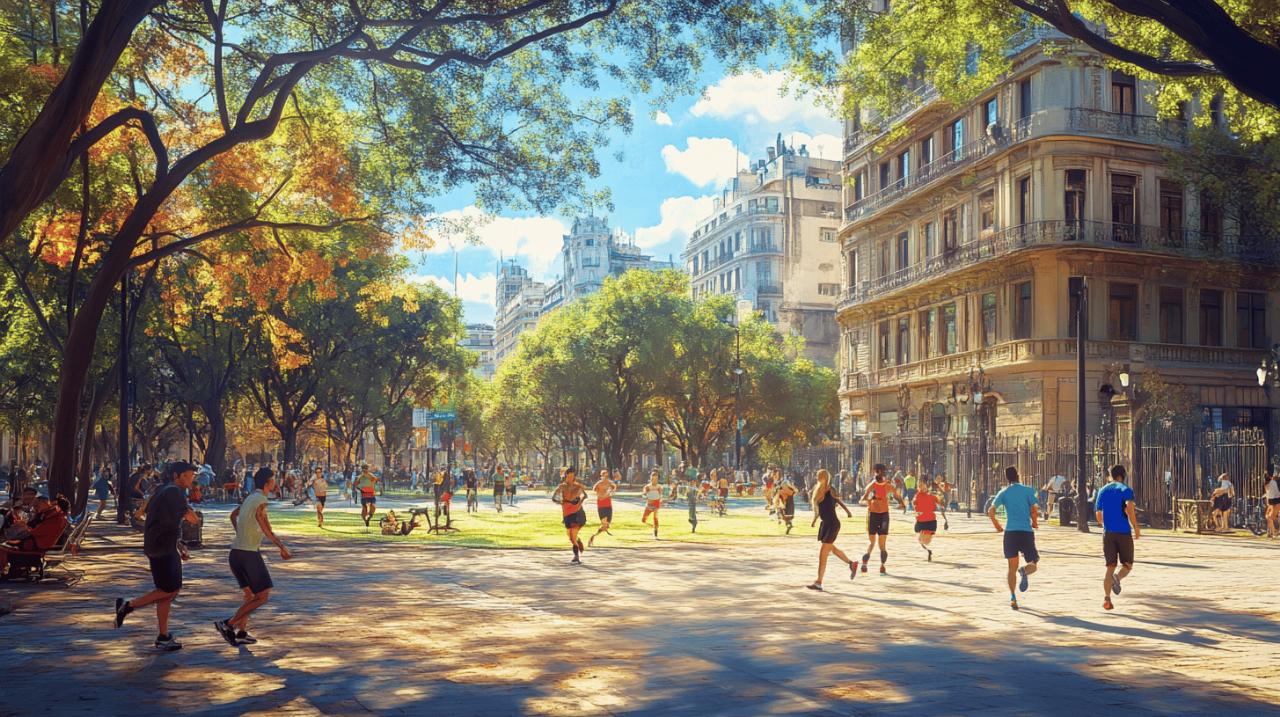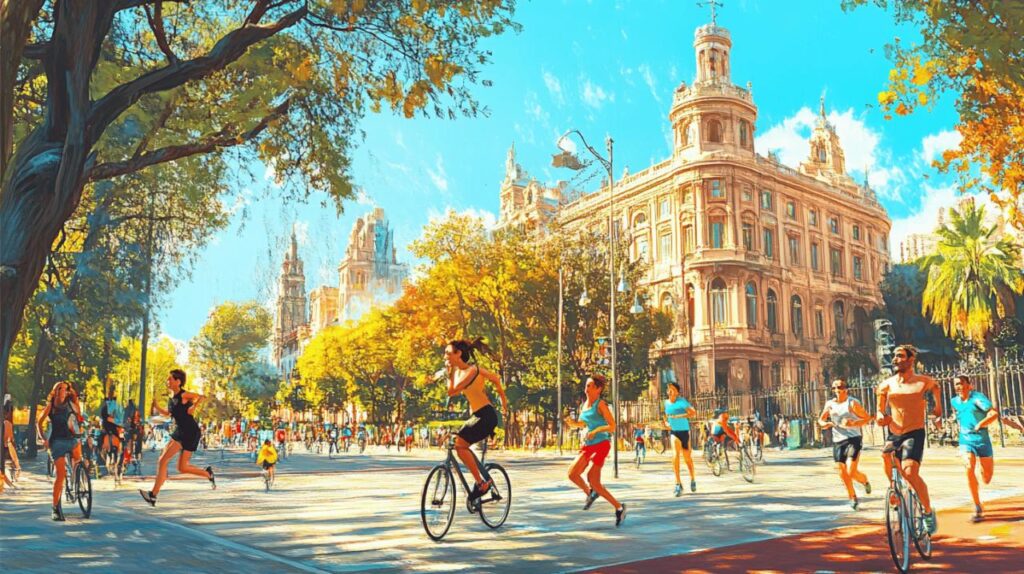Buenos Aires, the vibrant capital of Argentina, captivates visitors with its unique blend of European elegance and Latin American passion. This South American gem offers a wealth of experiences for travellers seeking cultural immersion, culinary adventures, and unforgettable memories. Walkabout Travel brings you an insider's guide to exploring this magnificent city, where historical landmarks stand alongside modern attractions, creating a mesmerising tapestry of experiences for every visitor.
Exploring buenos aires' iconic neighbourhoods
The soul of Buenos Aires lies in its diverse neighbourhoods, each with its own distinct character and charm. From the bohemian streets of Palermo to the historic corridors of Recoleta, the city unfolds like chapters in a fascinating book. Walkabout Travel specialises in guiding visitors through these unique districts, ensuring you experience the authentic essence of porteño life rather than merely checking off tourist sites.
The colourful streets of la boca
La Boca stands as one of Buenos Aires' most visually striking areas, renowned for its brightly painted buildings along Caminito Street. This former working-class district has transformed into an open-air museum celebrating Argentine culture. Artists display their works on the streets, while the rhythms of tango music float through the air. Taking photos at Caminito ranks among the most popular activities for visitors, capturing the neighbourhood's vibrant spirit. For sports enthusiasts, watching a Boca Juniors football match at the legendary La Bombonera stadium offers an exhilarating glimpse into the passionate sporting culture of Argentina.
Historical charm of san telmo
San Telmo exudes an irresistible historic allure with its cobblestone streets and well-preserved colonial buildings. Sundays transform this neighbourhood into a bustling hub of activity when the famous San Telmo Market spreads across 13 blocks from 9:00 am to 6:00 pm. Wandering through this market reveals treasures ranging from antiques to local produce, street performances, and artisanal crafts. The National History Museum provides context to Argentina's rich past, while the neighbourhood's intimate tango venues offer authentic cultural experiences. Many travellers find that spending a Sunday in San Telmo provides the perfect introduction to Buenos Aires' multifaceted character.
Culinary Delights of the Argentine Capital
Buenos Aires' food scene reflects its diverse cultural heritage, offering everything from sophisticated fine dining to humble street food with equally impressive flavours. The city has emerged as a gastronomic destination in its own right, with neighbourhoods like Palermo Soho becoming epicentres of culinary innovation alongside traditional establishments preserving age-old recipes.
Savouring world-famous argentine steaks
Argentine beef enjoys worldwide recognition for its exceptional quality, and experiencing an authentic asado should top every visitor's list. Don Julio, a MICHELIN-starred steakhouse, exemplifies the art of Argentine grilling, serving prime cuts cooked to perfection over open flames. For a more casual yet equally authentic experience, La Terracita Asado in Palermo Soho offers rooftop barbecue with spectacular city views. The ritual of the asado goes beyond mere dining—it represents a social institution where friends and family gather to share food, wine, and conversation, often lasting for hours. The traditional accompaniment to steak includes chimichurri sauce, a vibrant blend of herbs, garlic, oil, and vinegar that complements the rich flavours of the meat.
Street food and local specialities
Beyond its renowned steaks, Buenos Aires offers numerous culinary treasures worth discovering. Empanadas, savoury pastries filled with meat, cheese, or vegetables, provide a perfect portable snack while exploring the city. Argentine pizza deserves special mention, particularly at historic establishments like Pizzeria Güerrín, which has been serving thick, cheese-laden slices since 1932. Those with a sweet tooth should indulge in dulce de leche, a caramel-like spread featured in numerous desserts, including alfajores—cookie sandwiches filled with this sweet delight. Traditional breakfast includes facturas from local panaderías, sweet pastries that pair perfectly with coffee. For a comprehensive taste of local cuisine, food tours through neighbourhoods like Palermo offer guided introductions to these delicacies with historical and cultural context.
Embracing the tango culture
Tango represents the beating heart of Buenos Aires' cultural identity. This passionate dance emerged from the immigrant neighbourhoods in the late 19th century and has evolved into a sophisticated art form recognised worldwide. Today, tango permeates the city, from formal theatres to street performances, offering visitors multiple ways to experience this captivating expression of Argentine culture.
Watching professional tango performances
Professional tango shows showcase the extraordinary skill and emotion that define this dance. These performances range from elaborate productions in renowned venues to more intimate experiences in traditional milongas. The dancers convey stories of passion, longing, and romance through precise movements and intense connection. Many shows include dinner options featuring Argentine cuisine, creating a complete cultural experience. While some performances cater specifically to tourists, others attract local audiences as well, providing a more authentic glimpse into contemporary tango culture. The accompanying orchestras typically feature the distinctive sound of the bandoneon, a type of concertina essential to tango music, creating the characteristic melancholic melodies that define the genre.
Learning the Dance of Passion
For those inspired to try tango themselves, Buenos Aires offers numerous opportunities for visitors to learn the basics. Many dance schools welcome beginners with special workshops designed for tourists, teaching fundamental steps and movements. More adventurous travellers might visit practice sessions called prácticas, where locals gather to refine their technique in a relaxed atmosphere. These venues provide excellent opportunities to connect with porteños while gaining insight into this important cultural tradition. Tango lessons often become highlight memories for visitors, offering a physical connection to Argentine culture that transcends language barriers. Even those with two left feet find that the welcoming atmosphere and patient instruction make learning tango an accessible and enjoyable experience.
Hidden gems off the tourist trail
While Buenos Aires' major attractions deserve their fame, the city harbours countless lesser-known treasures that reward curious explorers. Venturing beyond the standard guidebook recommendations reveals a more nuanced understanding of this complex metropolis and provides opportunities for authentic connections with local culture.
Local markets and shopping districts
Beyond the famous San Telmo Market, Buenos Aires boasts numerous shopping experiences that showcase local craftsmanship and design. Palermo Soho has emerged as a hub for independent boutiques featuring work by Argentine designers, from fashion to home goods. Booklovers should not miss Librería El Ateneo Grand Splendid, a magnificent bookshop housed in a former theatre, preserving the ornate ceiling, stage curtains, and theatrical boxes while displaying thousands of titles. For unique souvenirs, the artisan markets in Recoleta offer handcrafted leather goods, mate gourds, and silver jewellery. The Palermo Hollywood area has become known for its trendy shops and galleries, perfect for discovering contemporary Argentine art and design. These shopping districts reflect the creative energy of Buenos Aires, where traditional crafts coexist with cutting-edge innovation.
Secret viewpoints for city panoramas
The distinctive skyline of Buenos Aires reveals itself from several vantage points throughout the city. Palacio Barolo, inspired by Dante's Divine Comedy, offers guided tours culminating in spectacular views from its lighthouse. The structure's unique architecture incorporates numerous symbolic elements referencing the literary masterpiece, making the journey to the top both visually and intellectually stimulating. For a more tranquil perspective, El Rosedal garden in Palermo provides scenic views across its rose-filled landscape and adjacent lake. The Costanera Sur Ecological Reserve, just steps from the modern Puerto Madero district, offers surprising natural landscapes with paths leading to viewpoints overlooking the Río de la Plata. These elevated perspectives help visitors appreciate the vast scale and architectural diversity of this sprawling metropolis.
Practical tips for your buenos aires walkabout
Navigating Buenos Aires successfully requires some practical knowledge to maximise enjoyment and minimise frustration. From transportation logistics to seasonal considerations, these insider tips help create a seamless experience exploring the Argentine capital.
Best Times to Visit and Weather Considerations
The most pleasant seasons to visit Buenos Aires are spring and autumn. From September to November, spring brings mild temperatures and blooming jacaranda trees that paint the city purple. March to May offers similarly comfortable conditions with golden autumn light that photographers particularly appreciate. Summer can be quite hot and humid, with January typically seeing temperatures above 30°C, though this coincides with many locals departing for coastal vacations, potentially meaning less crowded attractions. Winter runs from June to August with mild temperatures rarely dropping below 8°C, making Buenos Aires a viable year-round destination. Major festivals worth planning around include Tango Buenos Aires Festival in August and BAFICI international independent film festival in April. These seasonal considerations help travellers pack appropriately and plan activities suited to weather conditions.
Navigating the City Like a Local
Buenos Aires offers excellent public transportation options that make exploring straightforward with some basic knowledge. The SUBE card provides access to buses, subways, and trains, representing an economical choice for getting around. Buses called colectivos run extensively throughout the city, while the Subte subway system connects major areas with six lines. For convenience, ride-sharing apps like Uber and Cabify typically cost less than street taxis. The city also features a bike-sharing system for those who prefer cycling. Walking remains one of the best ways to discover Buenos Aires, particularly in pedestrian-friendly neighbourhoods like Palermo and Recoleta. Understanding basic Spanish phrases enhances the experience, though many people in tourist areas speak some English. While generally safe, maintaining awareness of surroundings and safeguarding valuables represents standard practice, particularly in crowded areas. These transportation strategies help visitors experience Buenos Aires efficiently while leaving room for serendipitous discoveries.



